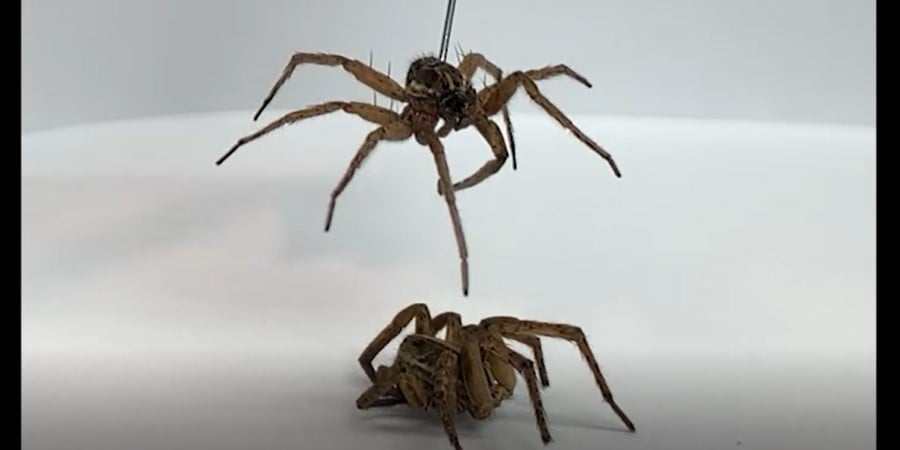
Videos Scientists from Rice University in Texas have used a dead spider as an actuator at the end of a robot arm – a feat they claim has initiated the field of "necrobotics".
"Humans have relied on biotic materials – non-living materials derived from living organisms – since their early ancestors wore animal hides as clothing and used bones for tools," the authors state in an article titled Necrobotics: Biotic Materials as Ready-to-Use Actuators. The article also notes that evolution has perfected many designs that could be useful in robots, and that spiders have proven especially interesting. Spiders' legs "do not have antagonistic muscle pairs; instead, they have only flexor muscles that contract their legs inwards, and hemolymph (i.e., blood) pressure generated in the prosoma (the part of the body connected to the legs) extends their legs outwards."
The authors had a hunch that if they could generate and control a force equivalent to blood pressure, they could make a dead spider's legs move in and out, allowing them to grip objects and release them again.
So they killed a wolf spider "through exposure to freezing temperature (approximately -4°C) for a period of 5–7 days" and then used a syringe to inject the spider's prosoma with glue.
By leaving the syringe in place and pumping in or withdrawing glue, the researchers were able to make the spider's legs contract and grip. Here's a vid of the necrobot at work, turning off a light.
The article claims that's a vastly easier way to make a gripper than with conventional robotic techniques that require all sorts of tedious fabrication and design efforts.
The necrobot gripped strongly. "The necrobotic gripper is capable of grasping objects with irregular geometries and up to 130 percent of its own mass," the article states. Other virtues include biodegradability and excellent camouflage when used in outdoor settings. Disadvantages include being creepy as all get out as shown in the video below that depicts one dead spider lifting another.
The article does consider the ethics of offing spiders, but notes "there are currently no clear guidelines in the literature regarding ethical sourcing and humane euthanasia of spiders."
The authors therefore "procured our spiders from a scientific product supplier and followed euthanasia methods presented in prior work."
But they're not sure those methods are appropriate, because they were designed to preserve spiders for examination under a microscope. The authors are not sure those methods are the best way to preserve spiders for use as necrobots. The suggest further study is called for.
"Our work here presents the first step in this new avenue of research, which we expect will extend to locomotion of necrobots by independently actuating each leg of the spider," the authors conclude – which doesn't sound like the stuff of nightmares at all. They'd also like to work on "biotic materials derived from other creatures with similar hydraulic characteristics."
Which makes concerns about The Rise Of The Machines seem quaint, now that we have The Rise Of The Machines Wielding Zombie Spiders to worry about. ®
Article From & Read More ( Scientists use dead spider as gripper for robot arm, label it a 'Necrobot' - The Register )https://ift.tt/QpCKaiO
Science
No comments:
Post a Comment